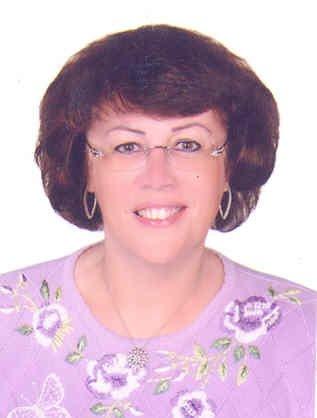Quick Tip: Google Translate: An Evil With ELT Potential?
by Anna Krulatz, Vítor de Souza, & Tülay Örücü
Audience: adult English language learners
As ESL teachers, we can all recall at least one occasion when, having read a paper written in English that did not sound English at all, we asked the student suspect in a low voice, “Did you use Google Translate?” We warn our students not to use the website as a writing aid because:
- The translations it produces are often nonsensical.
- We want our students to practice writing in English, and not in their L1.
Completely by accident, one of us, who is currently learning Norwegian as a foreign language, has discovered that perhaps there is some potential for Google Translate in an ESL classroom after all.
Like other Scandinavian languages, Norwegian has a few special letters that are not present in the English alphabet. This means that in order to type in Norwegian, you need to install a Norwegian keyboard. Laziness, as it turns out, can sometimes lead to an interesting discovery.
When trying to write in Norwegian, it seemed easier to use Google Translate, which comes with a language-specific keyboard built into the website. Of course, the text box is too small to type out extensive assignments such as essays, but for short sentences and paragraphs it is just perfect. But this was not the main benefit.
Of course, being a computer translator and not a human being, Google Translate does not recognize incorrectly spelled words and sentences with unusual syntax. Motivated, focused, and detail-oriented students can use these cues to improve their spelling and writing skills in a foreign language. This is how it works for ESL students:
- Go to Google Translate. Select English on the left. Select your native language on the right.
- Begin typing in English. As you are working, stop frequently and check the box on the right to see if the translation into your native language makes sense.
- If you misspell a word in English, it will appear the way you spelled it in English in the box on the right, which means you need to fix the spelling.
- If there are some word-order problems in your English text, very likely the translation into your native language will not make sense, and you should correct your English text.
We have started using this strategy with our students to write short texts, and it seemed that while the number of spelling mistakes in their writing decreased, the number of questions about word order and word choices increased. Our students have commented that their level of awareness while writing in English has escalated and they are more focused while writing.
Although the students have admitted (and we all agree!) that Google Translate is not always accurate, they have also said it can be a helpful tool. In one student’s words, Google Translate “[helped me] realize that I write some wrong sentences in English, and I can correct them in time.” It is exactly the result that we were hoping for: the students are able to correct their spelling mistakes before they hand in an assignment (which saves us a lot of time when grading!) and are becoming more conscious of the word choices and word order in their writing, often initiating class discussions and asking for explicit explanations.
___________________
Anna Krulatz is an associate professor of English at the Department of Teacher and Interpreter Education at Sør-Trøndelag University College in Norway. Her main interests include second language teaching methodology with focus on interlanguage pragmatics, content-based instruction, multilingualism, and teacher education.
Vítor de Souza is an MA candidate in linguistics at the University of Utah. His research focuses on content and language integration. De Souza double majored in English and Portuguese and earned licenses for foreign language instruction. He has taught English and Portuguese in the United States and Brazil.
Tülay Örücü received her BA in ELT from Middle East Technical University in Turkey. Currently, she is pursuing a master’s degree in linguistics, and teaching ESL courses at the University of Utah. Her MA thesis is on hybrid language teaching.
TESOL Blogs
Interested in writing a blog for TESOL?
Contact
Tomiko Breland with your idea or for submission details.
Check out the latest TESOL Blogs:
|
Function-Based Vocabulary Notebooks, by Elena Shvidko
 A few years ago, when I was teaching an intermediate writing course in an intensive English program, one of the experiential objectives of the course was to help students build their vocabulary by having them keep a function-based vocabulary notebook. Since the curriculum in that program was brand new, I was one of the first-generation instructors teaching the class, and I, as with the other teachers in the program, was not really sure how to go about that objective. Read More. A few years ago, when I was teaching an intermediate writing course in an intensive English program, one of the experiential objectives of the course was to help students build their vocabulary by having them keep a function-based vocabulary notebook. Since the curriculum in that program was brand new, I was one of the first-generation instructors teaching the class, and I, as with the other teachers in the program, was not really sure how to go about that objective. Read More.
|
|
The Future of English Language Teaching and Learning Locally and Globally, by Deena Boraie
 With my country, Egypt, going through many changes affecting all areas of life, including education policies, I started to think about the future and to reflect on what is happening in TESOL both locally and globally. Although I definitely do not have a linguistic crystal ball, I do want to try and look into the future of English language teaching and learning. Read More. With my country, Egypt, going through many changes affecting all areas of life, including education policies, I started to think about the future and to reflect on what is happening in TESOL both locally and globally. Although I definitely do not have a linguistic crystal ball, I do want to try and look into the future of English language teaching and learning. Read More.
|
|
Role-Playing the Present Perfect: A Speaking Activity, by Alexandra Lowe
 In a recent post, I described having my students “eavesdrop” on how the present perfect tense is actually used in the world they live in: at work, on TV, on the Internet, and by their children as they speak English with their friends. As promised, here is one of the activities I have used successfully in intermediate-level classes to put what my students discovered into practice. Read More. In a recent post, I described having my students “eavesdrop” on how the present perfect tense is actually used in the world they live in: at work, on TV, on the Internet, and by their children as they speak English with their friends. As promised, here is one of the activities I have used successfully in intermediate-level classes to put what my students discovered into practice. Read More.
|
|
Tech-Break: Slash Reading, by Tara Arntsen
 After so many months of tech-related posts, it is time for another tech-break! This one is called slash reading, and I am always happy to explain it to people. It even made it into one of the articles I did for TESOL Connections last year, but it is worth going over again in more detail. Slash reading is very straight-forward, and I love it because it has so many possible uses, including working on reading fluency and/or accuracy, and works with almost every age and language level. Read More. After so many months of tech-related posts, it is time for another tech-break! This one is called slash reading, and I am always happy to explain it to people. It even made it into one of the articles I did for TESOL Connections last year, but it is worth going over again in more detail. Slash reading is very straight-forward, and I love it because it has so many possible uses, including working on reading fluency and/or accuracy, and works with almost every age and language level. Read More.
|
TESOL Bookstore

March is Convention Month!

While you are in Portland, Oregon, USA visit TESOL Central in the Exhibit Hall for your TESOL Press books.
Convention attendees benefit from 20% OFF the member price.
Come and browse all Classroom Practice Series, New Ways Series, Standards, Just Off Press, Language Teacher Development Series, Best Sellers, and More
Oregon Convention Center, Portland, Oregon
Thursday, 27 March, 8:30 am–5:30 pm
Friday, 28 March, 8:30 am–5:30 pm
Saturday, 29 March, 8:30 am–2 pm
SEE YOU THERE!